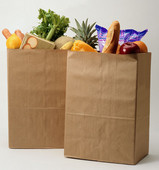
TUESDAY, Oct. 30 (HealthDay News) — Power outages and flooding caused by “superstorm” Sandy could lead to food safety problems and people need to take steps to ensure that their food supply is accessible and safe, federal government officials advise.
“Keeping food at safe storage temperatures in a power outage and away from flood waters is crucial to avoiding foodborne illness in weather emergencies,” U.S. Department of Agriculture (USDA) Under Secretary for food safety Elisabeth Hagen said in a USDA news release.
“We encourage residents in the projected path of the storm to include an appliance thermometer, coolers, and dry ice on their Hurricane Sandy preparation checklists. As a last resort for food safety, when in doubt, throw it out,” she said.
The USDA’s Food Safety and Inspection Services outlines the food safety steps you should take to prepare for severe weather:
- An appliance thermometer in the refrigerator and freezer can help to determine if food is safe during power outages. The refrigerator temperature should be 40 degrees Fahrenheit or lower and the freezer should be 0 degrees Fahrenheit or lower.
- Store food on high shelves so it will not get touched by contaminated water in case of flooding.
- Pack food tightly together in the freezer. This helps the food stay cold longer.
- Freezing leftovers, milk and fresh meat and poultry that you may not need immediately can help keep them at a safe temperature longer.
- Keep coolers on hand to store refrigerated food in case the power goes out for more than 4 hours.
- Buy or make ice and store in the freezer for use in the refrigerator or in a cooler. Freeze gel packs ahead of time for use in coolers. Plan ahead and know where dry ice and block ice can be purchased.
If the power goes out, you should keep refrigerator and freezer doors closed as much as possible. A refrigerator will keep food cold for about 4 hours if you keep the door closed and a full freezer will keep its temperature for about 48 hours, while a half-full freezer will keep its temperature for 24 hours, according to the Food Safety and Inspection Service (FSIS).
If the power stays out for a long time, buy dry or block ice to keep the refrigerator and freezer as cold as possible. Fifty pounds of dry ice should keep a fully-stocked 18-cubic-feet freezer cold for two days.
When the power comes back on after a weather emergency, you should check the temperature in the refrigerator and freezer. If it’s 40 degrees Fahrenheit or lower, the food is safe. If you don’t have a thermometer in the freezer, check each package of food. If the food still contains ice crystals or is below 40 degrees Fahrenheit when checked with a food thermometer, it can be safely refrozen, the FSIS said.
Throw out any perishable food — such as meat, poultry, fish, soft cheeses, milk, eggs, leftovers and deli items — that have been kept in a refrigerator or freezer above 40 degrees Fahrenheit for two or more hours.
Throw out any food that is not in a waterproof container if there is any chance that it came into contact with flood water. Containers with screw-caps, snap lids, pull tops and crimped caps are not waterproof. Also discard wooden cutting boards, plastic utensils, baby bottle nipples and pacifiers that may have come into contact with flood water.
Wash all metal pans, ceramic dishes and utensils that came into contact with flood water. Use hot soapy water and sanitize the items by boiling them in clean water or by immersing them for 15 minutes in a solution of 1 tablespoon of unscented, liquid chlorine bleach per gallon of drinking water.
Use bottled water that has not been in contact with flood waters. If bottled water is not available, tap water can be boiled for safety.
Never taste food to determine if it’s safe and when it doubt, throw it out.
More information
The U.S. Food Safety and Inspection Service offers A Consumer’s Guide to Food Safety: Severe Storms and Hurricanes, that can be downloaded and printed for reference during a power outage.

